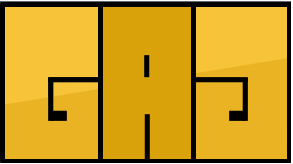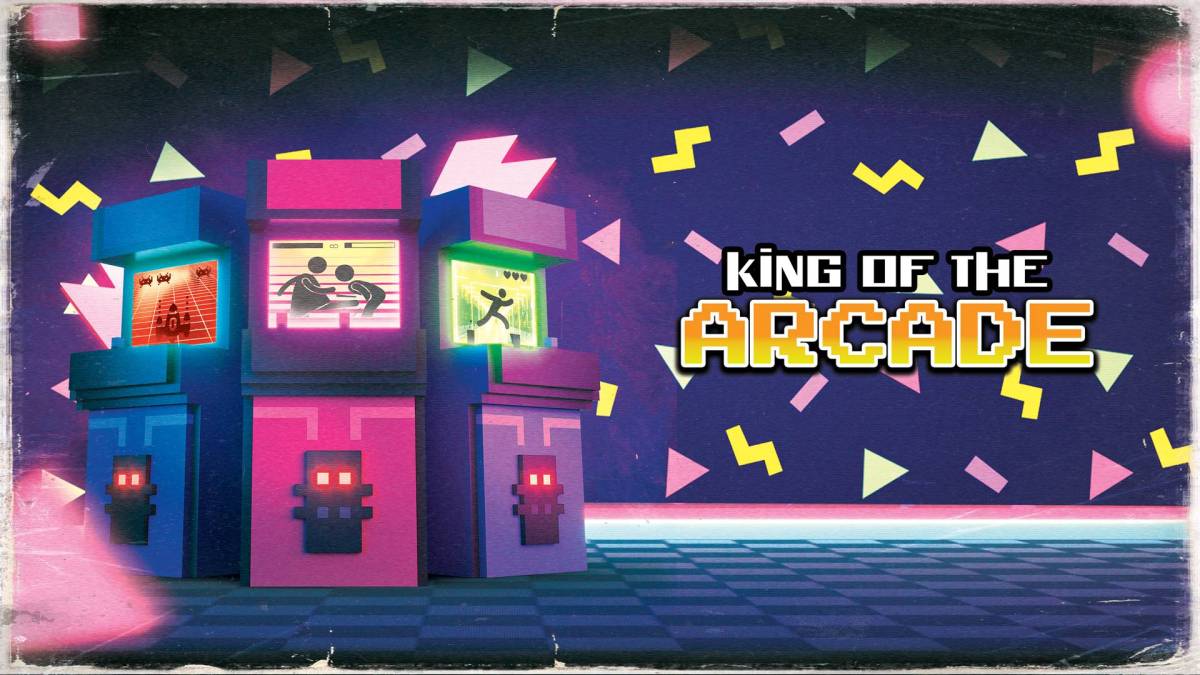
Platforms: PlayStation 4, PlayStation 5, Xbox One, Xbox Series X/S, Switch (reviewed), PC
Devastator touts itself as being a retro-inspired twin-stick shooter that is polished to the point of being the most intense and satisfying twin-stick shooter experience possible. It also claims to have such a surprising amount of depth and subtlety that it offers up vast gameplay variety. Those are some lofty claims to make, but as someone who is a fan of the genre, they convinced me to give their game a shot. So let’s find out if it can live up to its own hype.
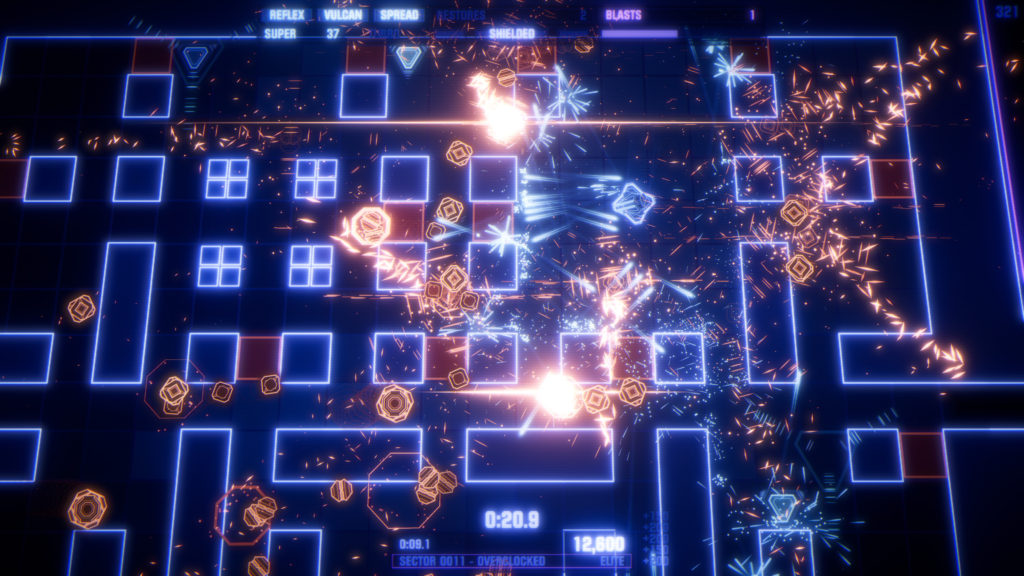
In Devastator, you are The Devastator, a ship that is sent out to destroy a group of viruses that are wreaking havoc. That’s about the extent of the story, but that’s par for the course in this type of game because it’s all about the action and chasing high scores. The gameplay will be very familiar to anyone who has played a twin-stick shooter – you move your ship with the left analog stick and aim/shoot with the right analog stick while avoiding all the things in the environment trying to kill you. If I had to make a comparison, I’d say it most closely resembles the Geometry Wars series. Much like those games, its core gameplay is done well and feels great to control.
Devastator utilizes a number of other mechanics on top of the simple twin-stick combat. First of all, there are three different weapon types that you can switch between freely. There’s Reflex for long range and sets that bounce off walls and objects three times, Vulcan for rapid fire and shots that travel quickly, and Spread for wide shots. If I’m being completely honest, I didn’t find switching between these weapons changed the combat all that much, with the exception of Reflex. So I found myself using the Reflex weapon almost exclusively just for its bounce feature.
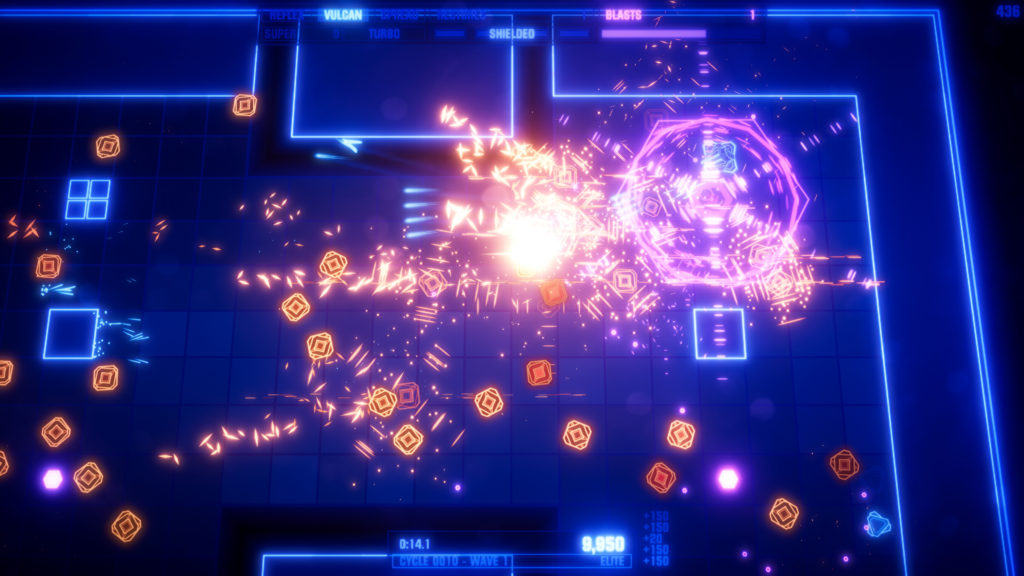
Your ship will also start with a shield, and, as long as the Devastator is shielded, you’ll receive double points, but taking one hit will destroy it. There are shield pods scattered throughout levels which serve a couple of purposes. First off, if you collect four of them you can restore a broken shield. They also give you 50 super ammo each time you pick one up, and this will make your shots more powerful while it lasts.
There’s also an ability which is known as a “blast” for you to use. This basically acts as a bomb that deals damage over a large area. Holding the button to set off the blast will charge it and cover an even larger area. You can hold up to three blasts at a time, and they’re replenished by collecting energy in levels.
On top of all that, your movement speed is affected by whether or not you are firing your weapon. If you aren’t firing, your ship will move faster. Moving faster you will charge up turbo. When your turbo is charged, you will then be able to fire three times faster for a short period of time.
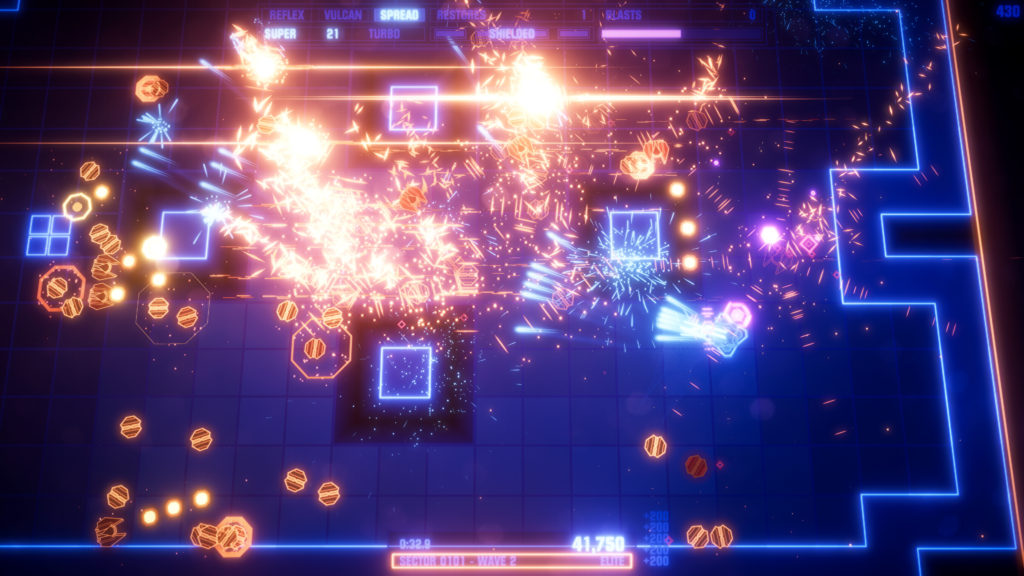
That’s a whole lot of stuff to keep track of. It took a bit of time for me to wrap my head around everything, but eventually, I was able to start utilizing most of these features to increase my high scores. The game’s description said it had a surprising amount of depth to it, something I actually found to be the truth. It was actually a nice addition to the more traditionally simple twin-stick gameplay.
As the battles got more and more chaotic, I found that keeping track of all of these mechanics got more difficult. Making matters worse is the HUD (which has a ton of information about all the stuff mentioned above) because actually taking the time to look at it can oftentimes lead to your demise. It also doesn’t help that in handheld mode on the Switch, the font is so small that it can be an issue just reading it in the first place.
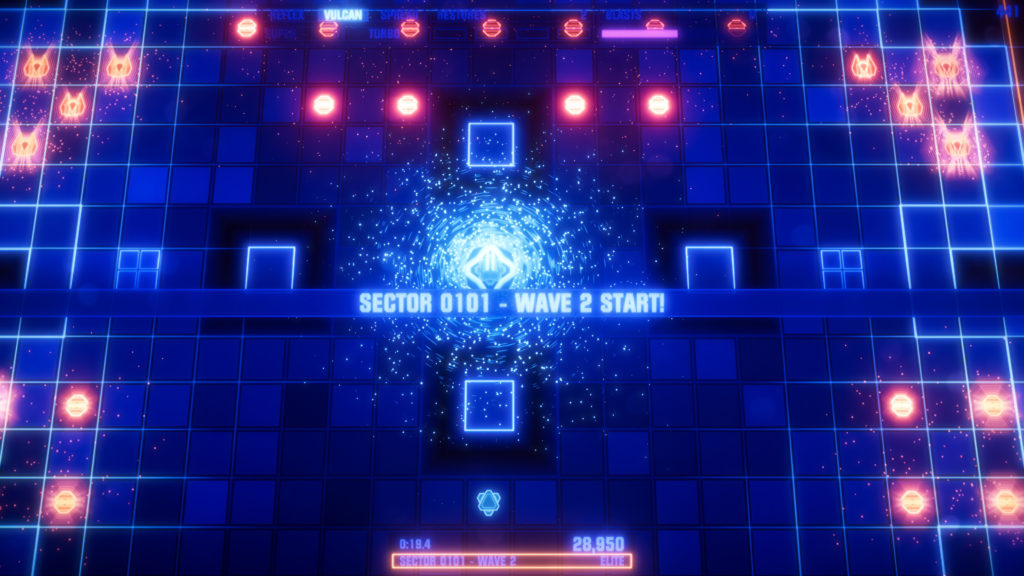
Devastator offers up three different gameplay modes for you to choose from. Quadrants gives you a three minute time limit with randomized, constantly changing virus waves, but you only get one life to score as many points as possible. Sectors is sort of like the campaign of the game and gives you 55 unique waves in 5 different sectors to battle through. Finally, Cycles throws 5 cycles of 11 randomized waves at you and almost feels like a Roguelike mode. Each mode keeps the core gameplay the same, while changing things up just enough that they each feel different. I found myself jumping between them often during my play time.
Devastator is a beautiful game in its simplicity. It has vector-inspired graphics and some pretty great particle effects that really are a treat for the eyes when in motion. I loved that with its simple color scheme, you can always differentiate between your ship and the enemies. All enemies that can be destroyed with your weapons glow orange, enemies that can’t be destroyed glow red, and your ship glows blue. Another nice touch is that while the enemies all may be the same color, there are a total of 15 different viruses and they each have a unique design and attack pattern. This variety really does help keep combat fresh and keep you on your toes.
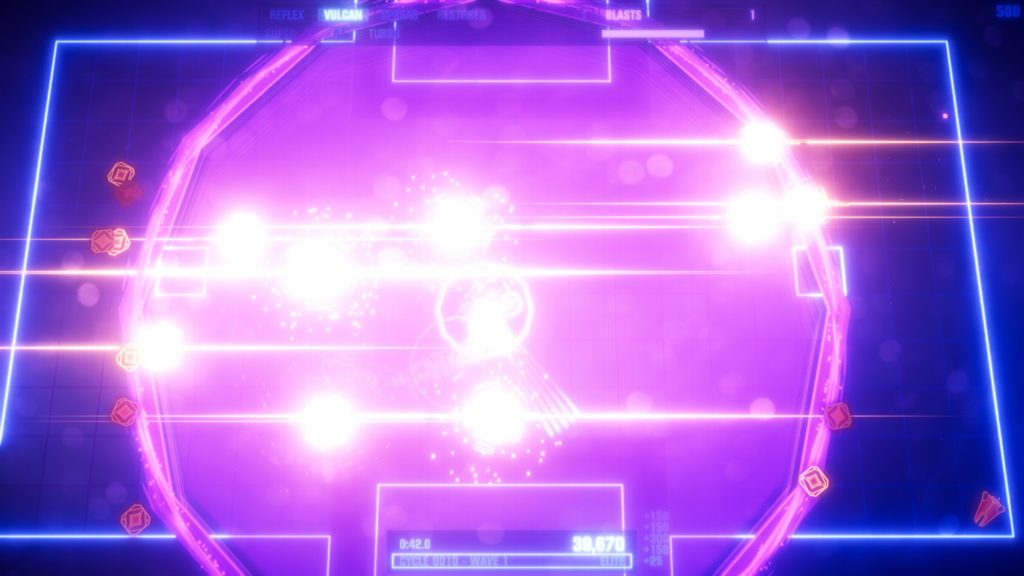
Devastator isn’t a perfect game and has a lot of mechanics that can take some time to get used to, but once I started feeling it, I found it was a very solid twin-stick shooter. Its own description hypes it up a ton and, in most cases, it lives up to that hype. It looks great with its vector-inspired graphics, controls and plays fantastically, and, most importantly, is a lot of fun. If you’re a fan of something like Geometry Wars or other arcade-style twin-stick shooters, Devastator is definitely one you should have on your radar.

